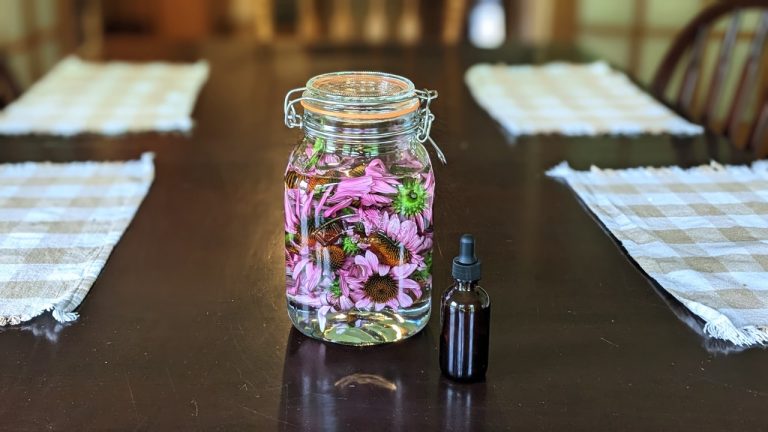Natural Ways to Balance Blood Sugar Levels
Stable blood sugar levels and insulin resistance are common topics of conversation among pre-diabetics, diabetics, and doctors. However, everyone needs to know about what blood sugar does in the body and why it is crucial to maintain stable blood sugar throughout the day to achieve optimal wellness. Ever wondered why you are so tired all of the sudden after eating a big meal? Or around 3pm during your afternoon crash where you always need an extra cup of coffee? Do you crave sugar or carbs every night after dinner and feel like you just have to eat a candy bar or Cheez-its? Almost all of these issues are due to your blood sugar and how your body processes the food (and types of food!) that you eat throughout your day.

Glucose, Blood Sugar, and Insulin Explained in Simple Terms
- All cells in our bodies need energy to function. Energy comes from the food we eat, which is broken down into molecules that are then absorbed by the intestinal cells into the bloodstream to be carried throughout the whole body.
- Glucose (often from carbohydrates) is the body’s preferred source of energy. When glucose is not available, ketones (from fat) are used to generate energy. If neither are available, the body breaks down protein into amino acids for energy.
- Blood sugar is the amount of glucose present roaming in the blood stream. In order for blood sugar to enter the cells to produce energy, it requires a “key”-like transporter protein called insulin to “open” the cell door.
- When consistently high amounts of glucose roam in the bloodstream, insulin resistance may occur. Just like a constant flow of people rushing to your door, you would get tired after a while of constantly opening the door and letting more and more people into your house all at once. This is also what can happen to our cells.
- In other words, insulin resistance means that the cells have gotten so many “knocks on the door” from excess glucose that it shuts out insulin completely. This can cause a number of problems in our ability to make energy and to function well.
Why Too Much Glucose can Harm You
A normal fasting glucose level is a measure of blood sugar that doctors test for. This should be should be less than 99 mg/dL in most normal cases, however it is frequently higher in many people who consume a standard American diet (Bauman, 2019). Blood sugar that is regularly high from overconsumption of refined and processed foods (like that of the standard American diet) can have dangerous, long-term consequences. In addition to symptoms like chronic fatigue, increased thirst, blurred vision, headaches, confusion, nausea and vomiting, and frequent urination, chronic dysglycemia (blood sugar that is too high or too low) can lead to more serious issues like:
- Insulin Resistance
- Metabolic Syndrome
- Non-alcoholic Fatty Liver Disease
- Cirrhosis/liver cancer
- Type 2 Diabetes
- Kidney Disease
- Atherosclerosis
- Cardiovascular Disease or Stroke
So What Can I Do to Support & Stabilize Healthy Blood Sugar Levels?
Focus on eating an anti-inflammatory diet full of protein and healthy fats.
So much of our modern foods actually cause inflammation in our bodies and do not nourish us in the way that whole food choices should. Focusing on an anti-inflammatory diet will help reduce the overall load of inflammation that wreak havoc on the body while balancing blood sugar. So what is an unprocessed, whole foods diet that is nutrient dense?
- Eat whole grains (quinoa, brown rice, buckwheat), primarily vegetables, and organic whenever possible.
- Avoid refined grains (white rice, white bread, cookies) and overly-processed dairy.
- Replace refined sugars you would have for dessert with fresh berries and yogurt or apples with nut butter, or dark chocolate.
- Maintain a diet that is higher in lean proteins (15-35%) and healthy fats (45-60%), and lower in carbohydrates (20-40%). (Bauman, 2019)
- Consume regular amounts of insulin- and glucose- stabilizing foods, such as cinnamon, oat bran, fiber, ginger, rosemary, green tea, cranberries, blueberries, lemon balm, fenugreek, holy basil tea and bitter melon. (Lipski, 2020)
- Work with your health practitioner or holistic nutritionist to set up the right meal plan and macronutrient ratios for you. They will also help to address nutrient deficiencies, imbalances in your intestinal microbiome, food sensitivities, and toxin exposure that may be causing dysglycemia (Bauman, 2019)
Prioritize what foods you eat first on your plate.
It is always best to consume protein (meats, eggs, beans, nuts and seeds) and/or fiber-rich whole foods (cruciferous veggies, chia seeds, nuts like almonds, legumes) first BEFORE you consume carbohydrates when you are eating a meal. This allows your body to stabilize its calorie intake and will even out your blood sugar levels so that they look more like a gentle slope rather than a harsh peak and valley. When your blood sugar is constantly spiking and dropping, this will make you feel exhausted and lead to more serious consequences long-term.
Pay attention to what you eat foods with.
This concept of putting foods together to maintain optimal health is called “food pairing.” You would do this to:
1) increase the nutrient density absorption of a particular food (such as pairing tomatoes with a healthy fat like olive oil or mozzarella cheese to help absorb a polyphenol called lycopene and fat-soluble vitamins even more effectively)
2) slow down the absorption of high-carb foods and slow the rise of blood glucose by pairing a protein or healthy fat with carbohydrates that you eat.
So instead of just eating granola with milk, try switching the milk out for greek yogurt and berries. Or if you are having spaghetti, make a meat sauce to go with it and drizzle generous amounts of olive oil over it.

Food Pairing Ideas include:
- Organic yogurt + berries + nuts
- Organic oatmeal + fruit + nuts/seeds
- Apples + almond butter
- Meatballs + whole wheat pasta + extra virgin olive oil
- Rice + beans
- Avocado toast (whole grain bread)
- Watermelon + feta cheese
- Prosciutto + cantaloupe
- Dates + goat cheese + bacon
References
References Bauman College. (2019). 1051. Chronic Disease Prevention Management [PDF].
Lipski, Liz. (2020). Digestive Wellness (5th Ed, p. 304.). New York, NY: McGraw-Hill.







Thank you for this very helpful post and for including food pairing ideas!
Love all this info. Thank you!
Love this! Thank you for explaining everything so simply. Great tips to balance blood sugar levels naturally.
Awesome information. Thank you!
This is so important for overall wellbeing and as a pregnant Type 1 Diabetic I really appreciate all the ideas ❤️
This is a great post and super helpful for people just learning the importance of maintaining balanced blood sugar levels. Thank you for sharing!